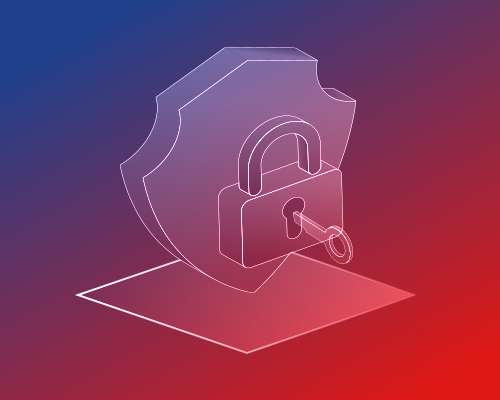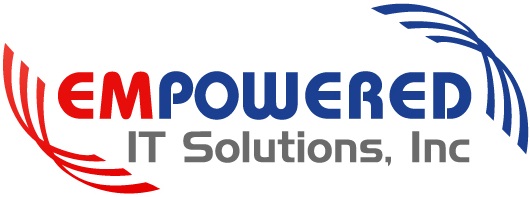Cybersecurity Fundamentals
Essential Cybersecurity Knowledge for Protecting Your Business

The Importance of Cybersecurity
In today’s digital age, a fundamental understanding of cybersecurity is essential for protecting your business. This guide covers the key concepts and practices that form the foundation of effective cybersecurity. Empowered IT Solutions is here to help you navigate these essentials and secure your business against potential threats.
Cyberattacks Happen
With an ever-evolving digital landscape of threats, hacks, breaches, and vulnerabilities, it is imperative to invest in cybersecurity. The challenge of securing personal information, intellectual property, and critical data has increased together with our use of and dependence on the internet, corporate networks, and digital devices. It may be easy to ignore it and take the “it will never happen to me or my business” position. We get it, cybersecurity can be overwhelming, but that’s why Empowered IT Solutions is here. We believe all businesses deserve powerful and cost-effective cybersecurity posture to protect their operations from cyber threats.
So Where Do You Start?
We want to stop cyber criminals from hurting businesses and people like you so the information below can help you understand the cyber threats that are targeting your business and how to proactively defend against them. If you have any questions, or if there’s anything further we can do to help, please reach out. We’ve got your back.
What is Cybersecurity?
Definition
Cybersecurity refers to the practice of protecting systems, networks, and programs from digital attacks. These cyber attacks are usually aimed at accessing, changing, or destroying sensitive information, extorting money from users, or interrupting normal business processes.
Importance
Effective cybersecurity measures protect sensitive data, maintain customer trust, and ensure the smooth operation of business processes. In an increasingly connected world, robust cybersecurity is crucial for safeguarding your business against ever-evolving threats.
Key Concepts in Cybersecurity
Threats & Vulnerabilities
Understanding the various types of cyber threats and vulnerabilities is the first step in defending against them. Common threats include hacking, internal threats, malware, phishing, ransomware, and more. Vulnerabilities are weaknesses in your environment that can be exploited by these threats.
Risk Management
Risk management involves identifying, assessing, and prioritizing risks, followed by applying resources to minimize and control the probability of adverse events. By managing risks effectively, you can protect your business from significant losses and disruptions.
Core Components of Cybersecurity
People
Human factors play a critical role in cybersecurity. Ensuring that employees are well-trained and aware of cybersecurity best practices is essential for protecting your business. Regular training and awareness programs help staff recognize and respond to potential threats, reducing the risk of human error. Cultivating a culture of security within your organization promotes proactive behavior and vigilance against cyber threats.
Process
Robust cybersecurity processes are necessary to manage and protect your information systems. This includes developing and implementing policies, procedures, and guidelines that define how your organization handles cybersecurity risks. Effective processes ensure that security measures are consistently applied and maintained. Key processes include incident response planning, regular security assessments, and compliance with industry standards and regulations.
Technology
Technology is the backbone of any cybersecurity strategy. Implementing the right technological solutions helps protect your systems and data from cyber threats. This includes firewalls, intrusion detection systems, encryption, and more. Regularly updating and patching software, using multi-factor authentication, and employing advanced threat detection tools are crucial for maintaining a strong security posture. Investing in the right technology helps safeguard your business from evolving cyber threats.
Best Practices for Cybersecurity
Regular Updates and Patch Management
Regular updates and patches help protect against known vulnerabilities and exploits. Keeping your software and systems up-to-date is a fundamental step in maintaining security.
Employee Training and Awareness
Training employees to recognize and respond to cyber threats is crucial for maintaining a secure environment. Employee awareness programs can significantly reduce the risk of successful cyber attacks.
Incident Response Planning
An effective incident response plan ensures that your business can quickly recover from a security breach or attack. Having a well-prepared response plan minimizes downtime and mitigates the impact of incidents.
Tools & Technologies for Cybersecurity
Security Assessment
Conducting regular cybersecurity assessments helps identify potential vulnerabilities in your systems and understand your overall cybersecurity posture. These assessments provide a clear view of your strengths and weaknesses, enabling you to address risks proactively.
Managed Endpoint Detection and Response (EDR)
Managed EDR solutions provide continuous monitoring and response to advanced threats on endpoints. Having a dedicated team to manage EDR tools ensures that suspicious activities are detected and investigated promptly, and responses to incidents are swift and effective.
Security Information and Event Management (SIEM)
SIEM systems collect and analyze security data from various sources to detect, respond to, and manage security incidents. By providing real-time analysis and correlation of events, SIEM enhances your ability to detect threats early and respond effectively.
Emerging Trends in Cybersecurity
Artificial Intelligence and Machine Learning
AI and ML can help detect patterns and anomalies, providing advanced threat detection and response capabilities. These technologies are increasingly being used to enhance cybersecurity defenses.
Zero Trust Security Model
The zero trust model assumes that threats can exist both inside and outside the network and requires verification for every access request. Implementing a zero trust approach strengthens security by eliminating implicit trust.
Cloud Security
As businesses move to the cloud, robust security measures are essential to protect cloud-based data and applications. Ensuring cloud security involves implementing strong access controls, encryption, and monitoring.
Your Cybersecurity To-Do List:
Understand the Risk ✔️
While you’re busy trying to beat out the competition, cybercriminals are busy hatching schemes to infect your devices with malware, take you down with a business email compromise attack (BEC), and steal your valuable data. You can’t let that happen. It’s a cost you can’t afford to bear.
Take Responsibility ✔️
You understand how easy it is for a small to medium-sized business to fall victim to an attack, so tackle the challenge head-on. With so much at stake, you need to come up with a plan that gets your security on a strong foundation. Bring in the professionals.
Assess Weaknesses ✔️
You won’t fully understand your risk until you meet with security experts who can conduct a thorough security assessment and diagnose structural weaknesses. To truly protect your business from cybercrime, you’ll need to undergo a cybersecurity evaluation to identify vulnerabilities.
Understanding the basics of cybersecurity is crucial for protecting your business from digital threats. Implementing best practices and staying informed about emerging trends can help you maintain a secure environment. Empowered IT Solutions is here to guide you through these fundamentals and provide expert support.
Ready to enhance your cybersecurity knowledge and protect your business?
